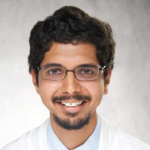
Olivier Le Moal / shutterstock.com
“Hi, I’m Dr. Kumar, and I’m an allergist,” is something I sometimes fumble when I introduce myself to confused rheumatology patients, before I quickly correct myself with, “… well, I’m also a rheumatologist.” There’s a moment of slight embarrassment that I crossed my circuits, but otherwise I’m proud to say I’m certified in both.
This dual certification makes me fairly unique—one of only about 70 people nationwide who are certified in allergy/immunology and rheumatology. But ask any of us and we’ll tell you this novelty comes not only with benefits but also considerable costs.1
For the record, I am a big proponent of combined training. I can’t imagine having a satisfying career as either exclusively an allergist or a rheumatologist. However, dual training is not for the faint of heart. Anyone who has done an MD/PhD, a med/peds residency, an allergy/immunology/rheum fellowship or any number of other combined training programs can attest to the long and arduous process. It seems wonderful on paper, but in practice it demands a peculiar combination of self-discipline and flexibility.
Although there is great variability in the types of programs and the certifications or degrees available, the fundamental considerations are the same. First, most combined programs require prior approval through institutional and accreditation bodies, which requires a lot of bureaucratic and administrative effort. Second, such programs also tend to reduce the total number of years of training compared to completing each program individually, but do not reduce the requirements needed for certification in both. Therefore, these programs are often very dense. Third, combined training programs usually weave two stand-alone programs together to promote continuity.
These three commonalities lead to certain generalizations regarding pros and cons.
Because there are so few of us, there is a sense of fraternity among dual-certified physicians.
Pro: Dual Certification Saves Time
Dual certification pathways are alluring because they save time in training. Indeed, completing two fellowships, residencies or dual programs sequentially would double the amount training time. By combining them, you may save a lot of years. When it comes to fellowship, dual-certified physicians typically shave off one year.
It’s not just the amount of time saved; it is also the quality of time. Dual-training pathways exist because there is overlap between specialties, and so there is synergy in teaching someone something once rather than over and over again. With allergy/immunology and rheumatology, learning the common core of basic science immunology only once meant I could focus on other topics with greater vigor. The same is true of administrative burdens, such as orientation or even documentation, in which combining programs may, in a relative sense, make training more efficient.
Moreover, that saved time allows future physicians to do amazing things with what they have learned. The path to becoming a doctor is long and zaps youth and vitality. Dual-certification programs hold the promise of cutting down on the time it takes to complete the journey. But, of course, it demands that you pick up the pace.
Con: Dual Certification Wastes Time
A terrible reason to pursue dual training, in whichever specialties, is the fear of being unable to decide between specialties. Indeed, those who dither indecisively between two extremes are unlikely to be happy in one or the other. To put it another way, even though it may sound like a bargain to do two specialties, it’s an even better bargain to think about sticking to one specialty and completing that, with electives and other customizations in whatever other field you may be interested in.
Moreover, dual pathways are tough. With dual certification, compressing all the objectives from two distinct fellowships into one unified training program leads to a great, almost incomprehensible, density. It really does require a lot of self-discipline to stay on top of everything. That, in and of itself, can eat away at time you could have spent on enrichment or leisure and self-care. It also may force learners into more superficial learning rather than deep dives.
Similarly, if not carefully planned, dual training may displace opportunities for future growth. Every hour spent in clinic or writing another note for a clinic patient takes away time and attention from publications, grant proposals and volunteer work required for scholarly growth. And devoting time to two specialties may prevent you from emerging into an environment that fosters a love of one particular field.
Pro: Dual Certification Allows You to Fill a Niche
One of the most rewarding aspects of dual certification is the ability to seamlessly transition between two very different specialties. Having that expansive knowledge base enables more streamlined coordination of care and provides insights that may not be accessible to others. This is particularly true when looking at overlap diseases. In my case, I feel much more comfortable dealing with immunodeficiencies (primary and secondary), eosinophilic diseases and urticaria. When my knowledge of rheumatology does not serve me well in treating cases of immune dysfunction, I can easily switch gears into allergy/immunology mode and recruit knowledge from my other base. This is true with any number of other specialties.
An even more powerful synergy exists when considering how diagnostic skills can be combined. After all, different specialties emphasize very different diagnostic reasoning skills. You may have already noticed that when there are multiple consultants, there are just as many insights, diagnoses and solutions as there are experts. Having two consultants in one brain allows for the reconciliation of at least two of these insights. Although diagnostic reasoning remains a murky science, we know that picking up on illness scripts is vital to coming up with a diagnosis. When trained properly, dual-certified physicians can read a greater breadth and depth of these illness scripts and potentially come up with novel solutions.
Similar principles apply to dual-trained physicians who go into research. Having feet in two specialties enables perspectives about unmet needs and connects specialties in ways that other conventional forms of collaboration simply cannot. The relocation of one skill into a novel setting can deliver all sorts of discoveries. Moreover, because so much research depends on who you know and how well you know them, access to different mentors and other human resources is potentially doubled.
Con: Dual Certification Leaves You Master of None
However, dual certification may come at a heavy price. Learners must master a huge breadth of knowledge in one field. When there are two specialties, this breadth becomes even more daunting. This may leave physicians stretched far too thin. A specialist, after all, is meant to be the in-depth expert on one particular topic. And, at least in academia, your value is derived from the depth of your knowledge, not the breadth. This was, unfortunately, a sobering point that several interviewers ingrained in me when I was looking for jobs fresh out of fellowships.
Similarly, having a hodgepodge of skills that’s neither here nor there may hinder professional development. Studies suggest that concerted and deliberate practice is necessary for the acquisition of skills. When you are shuffled from one specialty to the other, this may not be possible. This is especially bad for technical and procedural skills, where practice day in and day out is crucial for mastery. Because combined programs move fellows from one specialty to another fairly regularly, there may be a serious toll on proficiency in these skills. At minimum, it may require greater concerted effort to master them. In my experience, I had to proactively seek out opportunities for musculoskeletal ultrasonography and arthrocentesis. It worked out well, but I lost a lot of hours and nights in the process.
There are solutions to avoid becoming master of none. Some successful dual-
certified physicians become super-specialists—that is, institutionally, locally and nationally recognized experts in one of the intersections of the specialties. Others dissect the specialties in unexpected ways, such as going into education or administration to offer a global view of both specialties.
Alternatively, some tactically retreat from a specialty. I remember meeting a neonatologist who was trained in an internal medicine/pediatrics residency. Although she was grateful for the internal medicine background, she conceded she probably didn’t need an extra year of training. Many allergists and rheumatologists have embraced one field over the other for various reasons. However, they seldom leave all their attachments to the lesser practiced specialty. In the largest survey on dual-certified allergist/rheumatologists, nearly 100% expressed satisfaction in their decision to pursue dual certification.
Pro: Dual Certification Opens Career Opportunities
It seems like simple arithmetic: If you are trained in two distinct fields, you have access to jobs in two different fields. And that math is mostly true. If you are interested in any job, a greater breadth of training may open doors.
This is particularly true when dealing with multi-specialty clinics, in which there may not be sufficient demand for, say, both an allergist and rheumatologist, but enough for a single practitioner. Many clinics exclusively offer allergy/immunology and rheumatology services, and they would jump up at the chance to hire a dual-certified physician.
Even in academia, as mentioned earlier, dual-trained physicians may have a competitive advantage. A major focus within the academic world is to bridge specialties and create interdisciplinary services. Having dual-trained physicians is a great boon to divisions, so long as there is a niche to fill within the institution.
On a larger level, dual certification offers entry to an elite group of subspecialists. Because there are so few of us, there is a sense of fraternity among dual-certified physicians. At every opportunity and conference, we allergy/immunology/rheum physicians set aside time to meet, and we have robust and active communications through emails and text message chains. Some have even used these connections when looking for new jobs and career advice. This connectedness also improves the sense of purpose and belonging that drives well-being and inoculates us from burnout.
Con: Dual Certification May Lead to Pigeonholing
At the same time, dual training may inadvertently trap people into that niche. Although the twice-as-many-jobs math seems alluring, the fact is few job opportunities are specifically tailored for both specialties. Moreover, it is even more difficult to find jobs in which the split is roughly equal, which would be the ideal.
At its extreme, it’s possible dual training can actually ward off potential job prospects. Many employers simply want an employee who does one thing and one thing consistently. Varied experience may actually come across as a red flag to employers less interested in diversity and more interested in fulfilling a single desired goal. Other issues, including revenue sharing between two disparate divisions or groups, may also deter potential employers who would rather not deal with such administrative headaches.
So, to flip a common saying, is one head better than two? It depends on whose head and whose heart. Since graduation, I have never regretted dual certification, but I concede wholeheartedly that during the process there were a lot of times when I questioned what I was doing. Could I have figuratively been in a better place if I chose to stick with only one specialty? What would I do with all of my free time outside of clinic and consults? What was I going to do with two certifications after fellowship?
Toward the end of my fellowship, things seemed to conveniently fall into place, but the story continues to evolve because I’m still so early in my career. I’m sure that’s the same for most of us who have pursued dual training in one form or another.
 Bharat Kumar, MD, MME, FACP, RhMSUS, is the associate program director of the rheumatology fellowship training program at the University of Iowa in Iowa City. Follow him on Twitter @BharatKumarMD.
Bharat Kumar, MD, MME, FACP, RhMSUS, is the associate program director of the rheumatology fellowship training program at the University of Iowa in Iowa City. Follow him on Twitter @BharatKumarMD.
References
- Kumar B, Dolovcak S, Vogelgesang SA. Dual training in allergy/immunology and rheumatology: A viable and satisfying career path. Ann Allergy Asthma Immunol. 2017 May;118(5):634–636.

